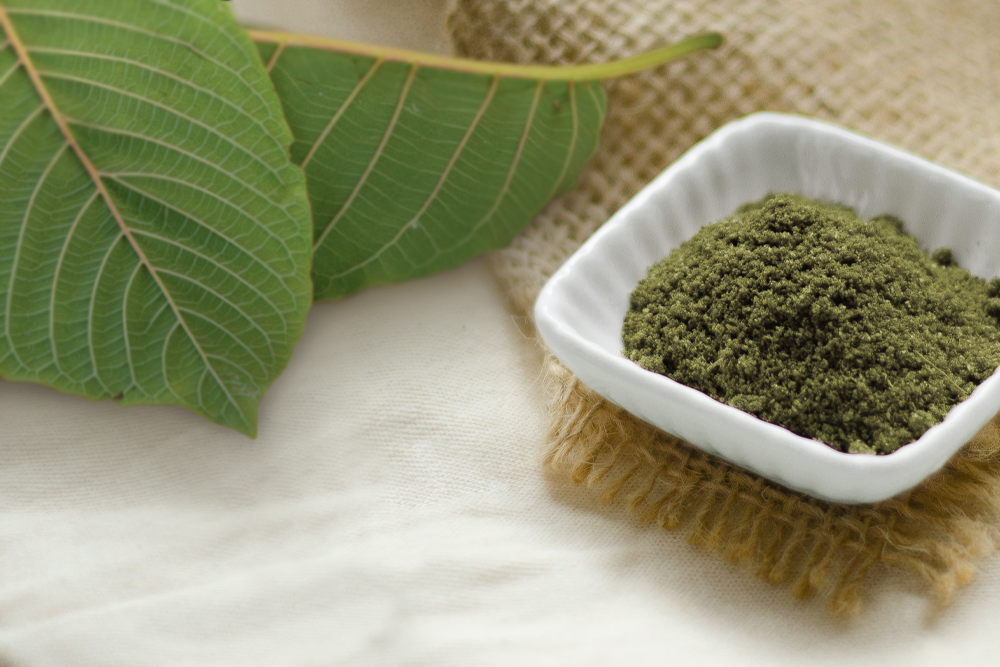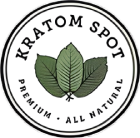
Mitragyna hirsuta is a natural supplement similar to kratom. In fact, both come from the same ethnobotanical family, which also includes coffee! If kratom isn’t quite your cup of tea, some believe that mitragyna hirsuta powder acts as an adequate kratom alternative. However, it can be difficult to find meaningful information about this product and its alkaloid, mitraphylline.
Where Does Mitragyna Hirsuta Originate?
As you may already know, kratom – known scientifically as mitragyna speciosa – derives from Southeast Asia. It’s reasonable to assume that plants in the same ethnobotanical family originate from similar climates.
Mitragyna hirsuta is native to the jungles of Cambodia, Malaysia, Thailand, and Vietnam. It’s especially popular in Thailand because kratom products are illegal. Locals refer to mitragyna hirsuta powder and other products by the name “kra thum khok.”
The leaves of the mitragyna hirsuta tree are small, light green, and have well-defined veins running through them.
What Are the Effects of Mitragyna Hirsuta?
As with any potential kratom alternatives, you’d expect mitragyna hirsuta to carry some of the same effects when ingested. However, anecdotal user reports (which are NOT based on scientific analysis) often state that the effects of mitragyna hirsuta powder are weaker than kratom powder.
Mitragyna hirsuta users often report effects like:
- Increased energy
- Mild euphoria
- Relaxation
- Decreased anxiety
But mitragyna hirsuta is not without side effects as well. The most commonly reported side effects after ingestion of mitragyna hirsuta powder are drowsiness, dizziness, and laziness. Some users even report symptoms of nausea.
Remember: there have not been any clinical trials into mitragyna hirsuta use. Supplements, whether natural or synthetic, tend to affect everyone differently. We are all unique! You may not experience the same benefits and side effects reported by other users. Always approach new ethnobotanicals with caution and start slow!
Mitragyna Hirsuta’s Primary Alkaloid: Mitraphylline
Mitraphylline is the primary alkaloid responsible for mitragyna hirsuta’s potential benefits. Interestingly enough, this alkaloid is found in kratom leaves and another unique ethnobotanical: Uncaria tomentosa, also known as “cat’s claw” because of its viney, claw-like shape.
Cat’s claw, including the alkaloid mitraphylline, has been linked to potential benefits for those suffering from rheumatoid arthritis. In one 2002 study, rheumatoid arthritis patients taking mitraphylline extracts reported a reduction in the number of hurting joints compared to the placebo group. However, a different 2002 report indicated that the anti-inflammatory and antioxidant effects of cat’s claw were “independent of their alkaloid content.”
So does mitraphylline offer anti-inflammatory and antioxidant benefits to users? The consensus is unclear. Users seem to experience relieving benefits, but there are not many reports of anti-inflammatory benefits. Plus, both of these 2002 studies used the mitraphylline extracted from cat’s claw, not from mitragyna hirsuta. More research is needed to validate the effects of the alkaloid mitraphylline.
How to Use Mitragyna Hirsuta
Mitragyna hirsuta leaves are commonly crushed into a powder. Mitragyna hirsuta powder can be used almost exactly like kratom powder:
- Brewed into a tea
- Washed down with water (known as the “Toss & Wash” method in the kratom world)
- Put into capsules
- Mixed with any number of foods or beverages
Is Mitragyna Hirsuta Legal in the US? Worldwide?
This potential kratom alternative is legal nationwide. As you might have heard, some states and individual cities have banned kratom products. Whether or not you agree with these bans is neither here nor there. However, mitragyna hirsuta is generally considered safe to use. In the United States, it is legal to buy, possess, use, and sell mitragyna hirsuta and products like mitragyna hirsuta powder.
Furthermore, as far as we can tell, there are no worldwide laws regarding mitragyna hirsuta. As we mentioned earlier, this ethnobotanical supplement is extremely popular in Thailand, where kratom bans took effect in the 1940s.
Despite its legality, mitragyna hirsuta is not regulated by the Food and Drug Administration (FDA), Drug Enforcement Administration (DEA), or any other government bodies. Because of this, mitragyna hirsuta products are typically labeled for “external use only.” Make of that what you will.
Mitragyna Hirsuta vs. Mitragyna Speciosa
As you’ve probably gathered, there are many similarities between mitragyna hirsuta and mitragyna speciosa (kratom). Let’s review the similarities between the two. Both…
- Derive from the Mitragyna plant family, which also includes coffee.
- Originate from similar climates and typically grow in jungles.
- Potentially offer energizing, relaxing, and anxiolytic benefits, depending on how they’re used.
- It can be taken in similar manners.
And now that we know the similarities between the two, what are the differences between mitragyna hirsuta and kratom products?
- Mitragyna hirsuta is considered to have generally weaker effects than kratom powder.
- Kratom products are outlawed in some cities and states, while no legislation exists around mitragyna hirsuta.
- Both grow naturally in Southeast Asia, but kratom is more commonly grown in Bali and Indonesia, while mitragyna hirsuta is more commonly grown in Cambodia and Vietnam. Both of these botanicals grow throughout Thailand and Malaysia.
- Mitragyna hirsuta contains higher concentrations of the alkaloid mitraphylline, while kratom contains higher concentrations of the alkaloid mitragynine.
Mitragyna Hirsuta in Conclusion: Why Should You Care?
At Kratom Spot, we are prominent members of the botanical wellness industry. As such, whenever we hear about a kratom alternative, we like to give an unbiased overview so our readers can gain a sense of what’s out there. At the end of the day, we want what’s best for the health and wellness of our Kratom Spot family.
So should you try mitragyna hirsuta? We believe that anecdotal reports offer a positive outlook on this ethnobotanical supplement. However, remember that anecdotal reports are not rooted in fact, but rather in user experience. You may not have the same experience as other users. If you decide to try mitragyna hirsuta powder as an alternative to kratom powder, we suggest you take it slow. Dosages may differ between the two, and you won’t know how your body will react until after ingestion.
All in all, based on our research, we believe that mitragyna hirsuta is generally considered safe to use. That said, continued research is necessary to fully understand the benefits of mitragyna hirsuta. Until then, we’ll continue to advocate for what’s best for our health and wellness. We believe in the power of kratom. Why not kratom’s cousin, too?

